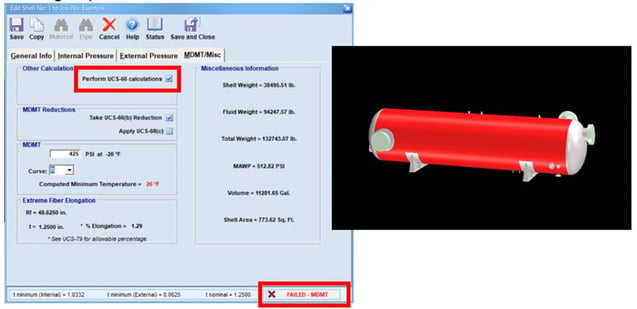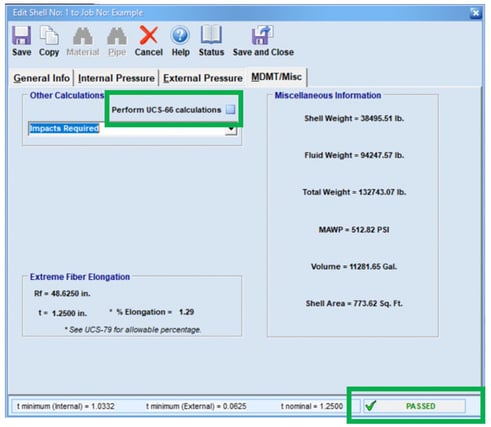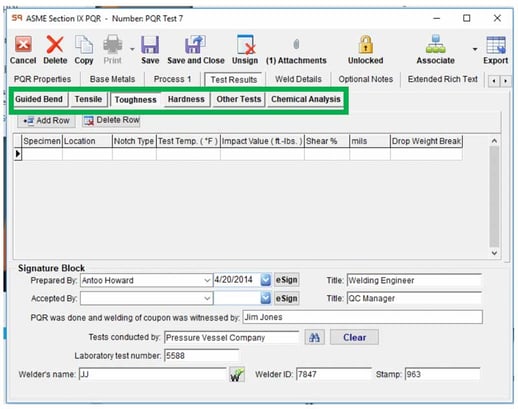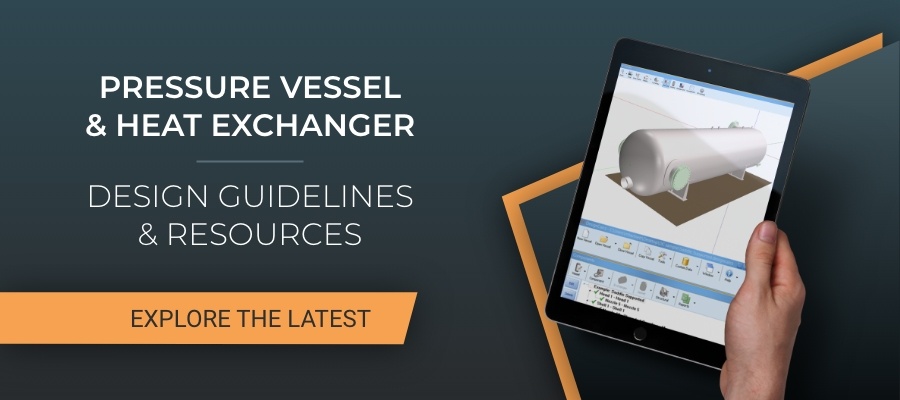What is toughness per ASME Section VIII?
All pressure vessel designers need to evaluate their vessel designs for toughness considerations and determine if using the Charpy impact test or other types of toughness testing is required.
The rules of ASME Section VIII, Divisions 1 and 2 may require toughness testing to be performed to demonstrate the suitability of the vessel for service at the designated minimum design metal temperature (MDMT) or may provide several options for exemption from toughness testing under qualifying conditions.

Temperature and cold working changes material toughness
In materials science and metallurgy, toughness is the ability of a material to absorb energy and plastically deform without fracturing. [1] One definition of material toughness is the amount of energy per unit volume that a material can absorb before rupturing.
It is also defined as a material's resistance to fracture when stressed. As the material is hardened, through cold working for example, and as the temperature of the material drops, the toughness of the material will also decrease.
Related Article: 2020 Pressure Vessel & Heat Exchanger Design Guidelines and Resources
The Charpy Impact Test can measure material toughness
The toughness of a material can be measured using a small specimen of that material. A typical testing machine uses a pendulum to strike a notched specimen of the defined cross-section and deform it. The height from which the pendulum fell, minus the height to which it rose after deforming the specimen, multiplied by the weight of the pendulum is a measure of the energy absorbed by the specimen as it was deformed during the impact with the pendulum.
The Izod and Charpy impact strength tests are typical ASTM tests used to determine toughness. The specific requirements for toughness testing along with special exemptions from the testing may be found in Parts UG, UCS, UHA and UNF of Division 1, and Part 3 of Division 2.
Pressure vessel design software can reduce the need to test!
In a previous blog post, we addressed why designers use ASME Pressure Vessel Design Calculation Software, like DesignCalcs to safely and quickly answer the question, “how thin can I get with a certain material, while still being safe?”.
Conversely as thickness increases so does the risk of brittle fracture; therefore, the temperature before impact tests are required must get warmer. In carbon steels for example, if Minimum Design Metal Temperature for a given thickness falls below the appropriate material curve, then Impact testing is mandatory, for many cases.
In DesignCalcs there is a special status called "FAILED - MDMT" which informs the user that other calculations on the component are passing, but the check on MDMT is failing.
The following images show a 3D render of the component indicating the fail red, and you can see from the input form where a required MDMT of -20F with an allowed or computed MDMT of 26F (a difference of 46 degrees).

However, with allowances for stress relief built into the code rules, the code accounts for situations that will permit an increase in the impact test exemption temperature.
In the sample case above the user may need to purchase the Charpy impact tested form of the material and that can be represented by using the MDMT exemption drop down that becomes available when unchecking the "Perform UCS-66 Calculations" checkbox.
Note that UCS means rules for Carbon and low alloy steels (which are the most likely to run into issues with this because the allowed temperatures are higher). So, in this case, the user will want to use impact tested weld procedures along with impact tested materials.

Related: “If you're interested in Allowable Stresses and Safety Factors outlined in ASME'S BPV CODE MATERIAL STANDARDS you can read our post on this subject THE 3 KEY ASPECTS OF ASME'S BPV CODE MATERIAL STANDARDS.”
Recording of impact testing in your WPS
If a Charpy impact test is performed, the supplementary essential variables that apply to the Welding Procedure Specification (WPS) need to be recorded within the document. When using ProWrite, it is easy to select "With Supplementary" option from the menu to apply this option. Normally 'Without Supplementary' is selected for AWS procedures or by customer request.
Here is a screenshot of a PQR in ProWrite showing that when the Test Requirements field is set to "With Supplementary" the Supplementary Essential Variables for Impact Testing become Essential Variables.

When is recording an impact only PQR required?
"Impact Only Procedure Qualification Record (PQR)" is used when qualifying a WPS for impact requirements when it's original PQR was qualified without impact requirements. The only test results entered will be impact tests since the other required mechanical tests were done on the original PQR. If "Impact Only PQR" is selected the original PQR has to be a Standard PQR with all variables matching the "Impact Only PQR."
"Supplemental Test PQR" is used to record other types of test results such as hardness, macro, etc. when they were not done on the original PQR.
Here a screenshot of a PQR in ProWrite showing that Toughness Test becomes available when the Test Requirements field is set to "With Supplementary" and Charpy Impact Testing is being required.

This information is directly populated in data reports that are required for submission, an example of this can be seen in a U1 Form template can be extracted from FormPro and DesignDocs where on line 10 the manufacturer must have indicated if an impact takes place and at what temperature.

Exemptions can reduce toughness test requirements!
As testing for toughness is very expensive, pressure vessel manufacturers need to understand what exemptions are available from this costly test. That is why many of our customers use a combination of DesignCalcs, ProWrite, and FormPro provided with the latest code updates to allow them to work with confidence in making the critical analysis to determine that when testing is done it complies with code.
If you have any questions, reach out to our industry experts at CEI!




Leave a Comment